Through the centuries, Turkey has seen the rise and fall of many empires. Each of which has left its mark on its history and heritage. Every empire that rose created their legacy through art and architecture, some of which remain to date while others are weaved into folklore.
In Istanbul, in particular, there are many lavish, larger than life remains of the Ottoman era which are a depiction of their lives but also a cultural inheritance they left behind. More specifically, the Palaces in which they lived and conducted their business is seen as an important heirloom in history for the people of Turkey.
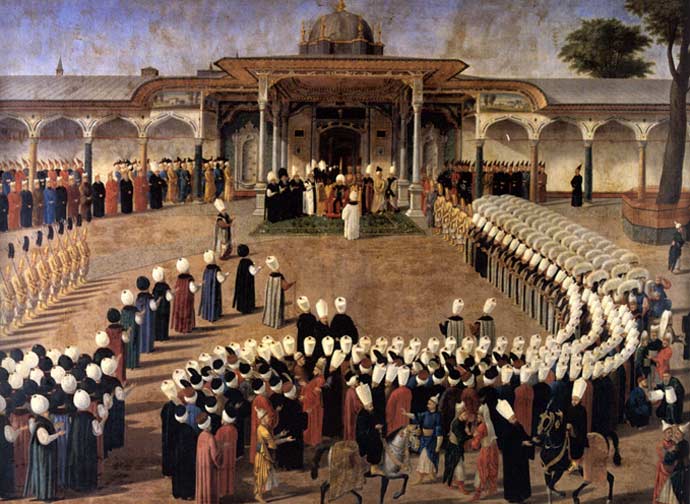
These palaces adorn the cityscape with the grace and dignity their inhabitants had left behind. Most of them have been converted into museums where thousands of tourists visit daily. The experience of being inside these palaces is unlike any other. There is a sense of nostalgia for a time that I had not been present in but the palaces have been so beautifully preserved that you can not help but transport back in time.
I have put together a list of some of the palaces that you HAVE to visit on your trip to Istanbul since there is only so much to explore in this big city. You might have heard of a few of the palaces in the list because of how significant and grand they are. I have also added a few hidden gems that are not as popular but just as exciting to visit!
10. Aynalikavak Palace
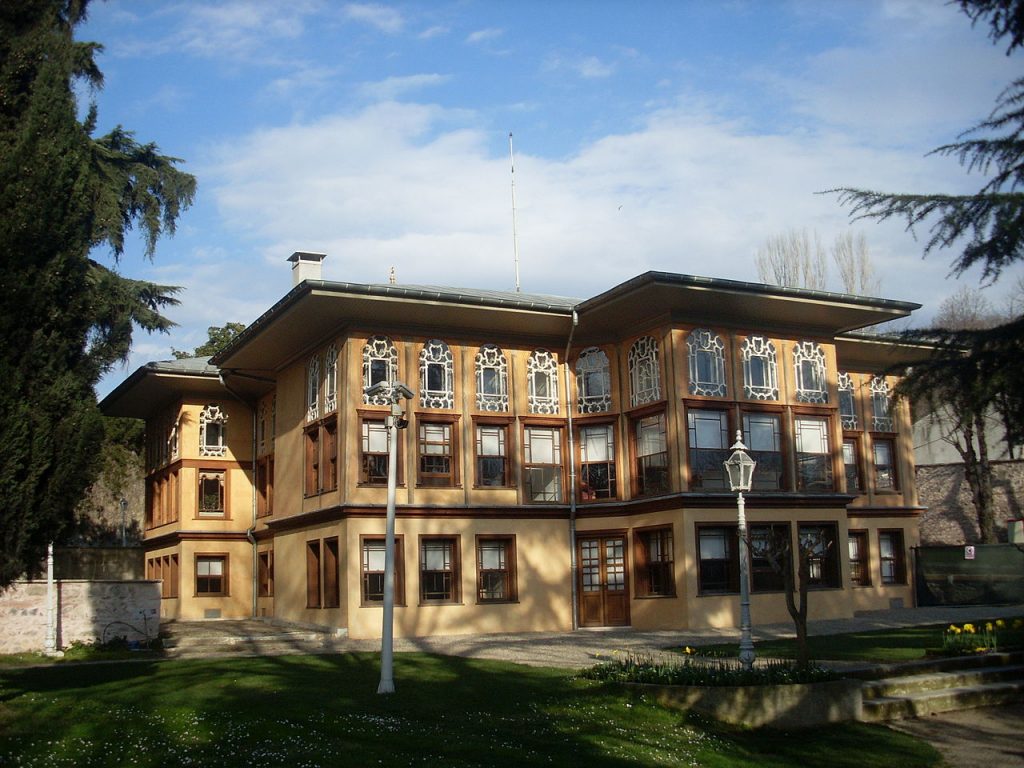
Aynalikavak Palace is one of the older palaces in this list, being constructed between 1603 to 1617 under the reign of Sultan Ahmed I. Through the years that followed, presiding Sultan’s expanded and renovated the palace to their liking. The building was later restored by the Turkish government after the fall of the empire.
The palace is constructed in the classical Ottoman style architecture with high ceilings and beautiful chandeliers. According to historical accounts, the name of the palace, “The Palace of Mirrored Poplars” comes from the number of mirrors that were sent by the Venetians to the Ottomans in 1715. Those mirrors were used for the decoration of the palace.
The palace is not as popular among tourists because of its location but it has a lot to offer. It sits basked in glory overlooking the Golden Horn. Within the complex of the palace, there are some of the most stunning gardens, a cozy little cafe as well as one of the most interesting museum exhibits.
In the basement of the Aynalikavak Palace, you will find an extremely well-preserved museum of Turkish music. You can see some of the oldest musical instruments that date back to the Ottomans. I am always mesmerized when I go there and can not recommend it enough.
You best believe that the entry to the palace will cost you merely 5TL. Like most palaces and museums, you can visit it any day between 9 AM to 5 PM, except Monday and Thursday.
You can find the palace on Aynalikavak Cd, Beyoglu/Istanbul.
9. Adile Sultan Palace
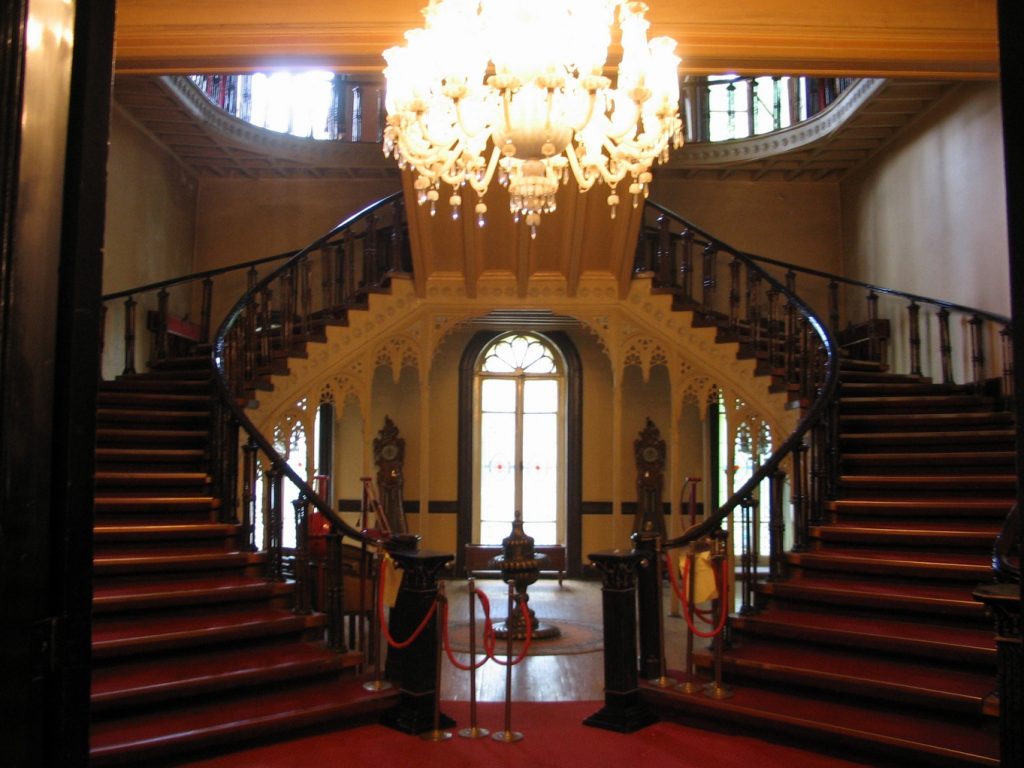
Adile Sultan Palace was commissioned by Sultan Abdulaziz to Sarkis Balyan as a gift to this sister, Princess Adile Sultan. In the same location of the palace, it used to be a kiosk that was presented to her by her other brother, Sultan Abdulmecid I.
What makes Adile Sultan Palace so unique and worth visiting is primarily its location. Unlike anything I have seen, the Palace rests on top of a hill along the Bosphorus that meets the Asian side of the city. From the palace, you can see the most incredible view of the whole sea stretched between the Marmara to the Black Sea.
Similar to the palaces that had been constructed within the era, Adile Sultan is embellished in regal fittings and fixtures from around Europe. The main hall is a vision in its golden glory and crystal chandeliers.
The palace was restored and rebuilt in the early to mid-2000s after it had burned down due to an electrical fault in 1986. The current layout of the palace has 20 seminar rooms, meeting and banquet halls, exhibition areas, a museum as well as a dining hall.
The garden of the palace can also be reserved for private events. It is an exceptional venue for weddings! Adile Sultan Palace is open every day of the week around the clock.
You can visit the palace in Vanikoy Cd, Uskudar/Istanbul.
8. Ihlamur Palace
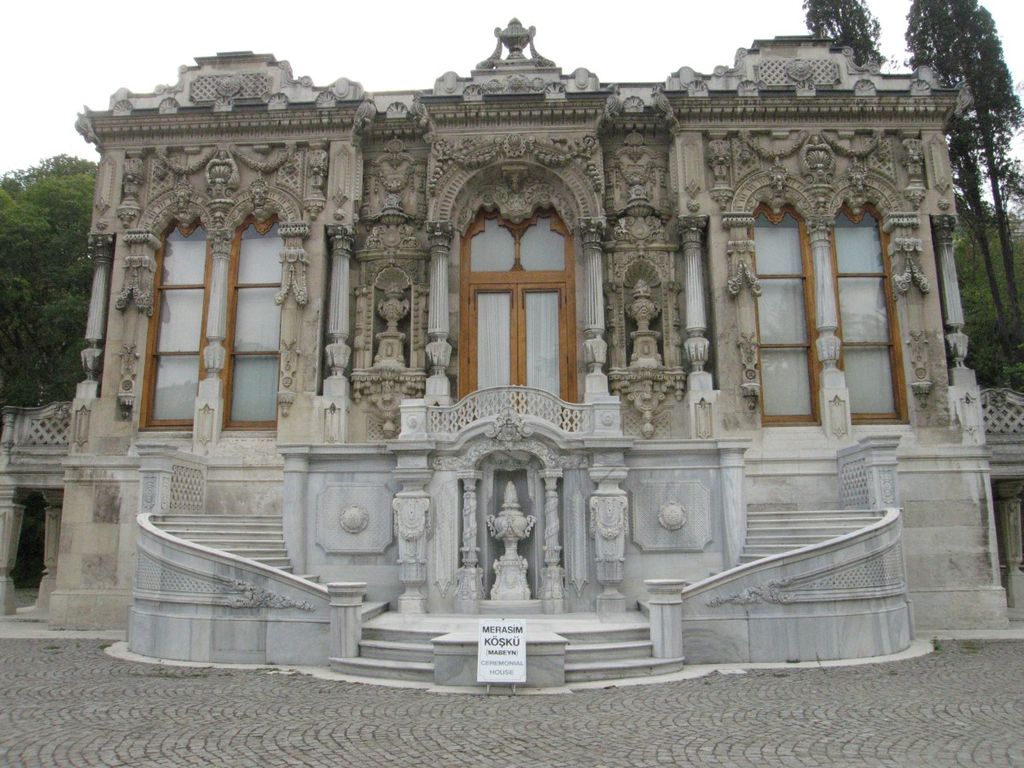
Ihlamur is an Ottoman summer palace commissioned by Sultan Abdulmecid I to the Balyan family from 1849 to 1855. Since the palace was constructed as a summer home for the royal family, it did not serve any administrative purpose.
However, it still is a beautiful retreat, enclosed within the walls of the royal palace. Constructed in classical Baroque style, the staircase in the front will lead you inside the tastefully decorated mansion. It goes hand-in-hand with the Ottoman norm at the time, the interior is embellished with sophisticated marble work and chandeliers.
I highly recommend you visit the Palace. The Palace-turned museum, the premises are surrounded by a stunning garden as well as a cute cafe inside the palace.
Besides Monday and Thursday, you can go there any day between 9 AM to 5 PM. The tour of the pavilion and park costs merely 5TL.
It is located in Ihlamurde Cd, Besiktas/Istanbul.
7. Beylerbeyi Palace
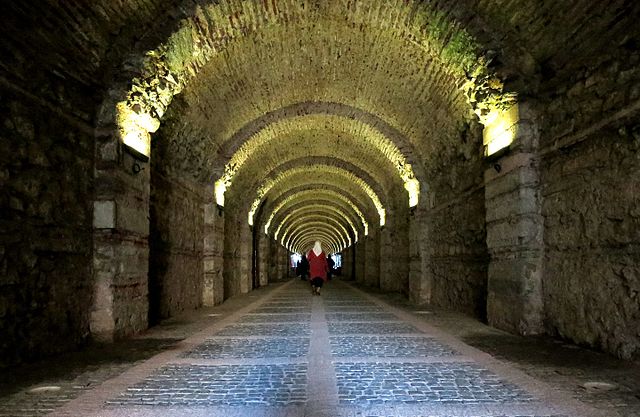
Beylerbeyi Palace is another example of the later Ottoman architecture of the 19th century. It was constructed in the 1860s on the Asian side of the Bosphorus, commissioned by Sultan Abdulaziz to the Armenian architects of the Balyan family.
The palace was built as a summer residence for the royal family, as it became a tradition for most Sultans to build their own palaces after the shift from Topkapi.
It is a combination of the french baroque style and the traditional Ottoman aesthetic, quite like most palaces and mosques that had been constructed in the period. The interior of the palace is an absolute spectacle of extravagant decor, it is in a league of its own.
The exterior is mostly marble and stone, while on the inside there are the most ravishing Bohemian crystal chandeliers, gorgeous authentic Hereke carpets, French clocks and a vast collection of porcelain vases from around Europe and Asia. The palace itself has 24 rooms and 6 halls in the two-storied building. Outside there are lush gardens with different types of trees and flowers as well as a breath-taking view of the Bosphorus.
Beylerbeyi Palace has hosted many royals from around the world. One of them being Empress Eugine of France who was so enthralled by the grandeur of the palace that she had the window of the palace’s guest room replicated for her own bedroom. Other notable guests of the palace include the Duke and Duchess of Windsor.
You can enter the palace for 40TL which is 6 Euros. The palace is open to the public daily, with the exclusion of Monday, between 9 AM to 5 PM.
It is located in Abdullahaga Cd in Uskudar/Istanbul.
6. Kucuksu Palace
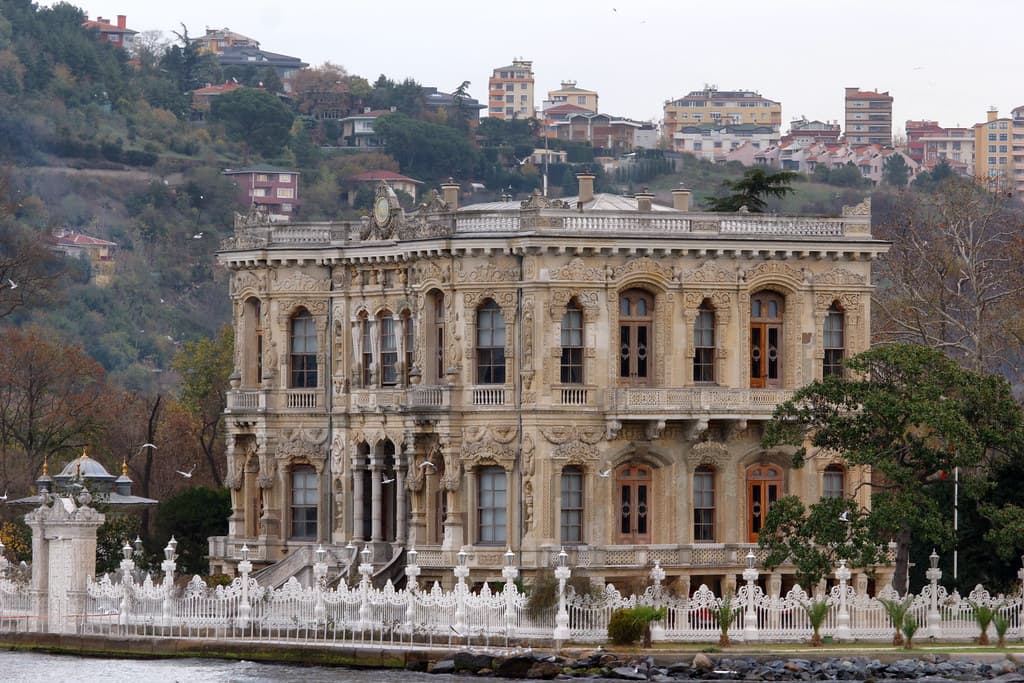
Kucuksu Palace is one of the smaller Ottoman spectacles that rests on the shore of the Asian side of Istanbul. It was commissioned by Sultan Abdulmecid I to the Armenian architect Gabarat Balyan and his son Nigogayos Balyan in 1857.
Previously, the same location used to be a palace made out of wood which was used by Mahmud I and passed onto his successors until 1839.
Even though it is small, Kucuksu Palace is in a league of its own extravagance. Surrounded by an intricate steel fence around the garden, the palace has gates on all four of its sides that lead will you inside.
The halls of the Kucuksu Palace adorn some of the most stunning Bohemian crystal chandeliers, Italian marble fireplaces, as well as authentic Hereke carpets. The intricate details of the two-storied Ottoman Palace are a vision not to be missed.
After the establishment of the Republic, Kucuksu Palace was converted into a state guest house by the Ataturk government. However, it wasn’t until 1994 when the Palace went under the process of restoration and was opened to the public soon afterward.
My favorite thing about Kucuksu Palace is that it is not heavily crowded. Considering it is farther away from most of the tourist attractions, it is a relaxing spot for a fun weekend picnic by the shore.
The entrance fee is as minimal as 5TL, which is less than 1 Euro. The Palace is closed to the public on Mondays and Thursdays, but otherwise, you can go between 9 AM to 5 PM.
It is located in Kucuksu Cd, Beykoz/Istanbul.
5. Palace of the Porphyrogenitus (Tekfur Palace)
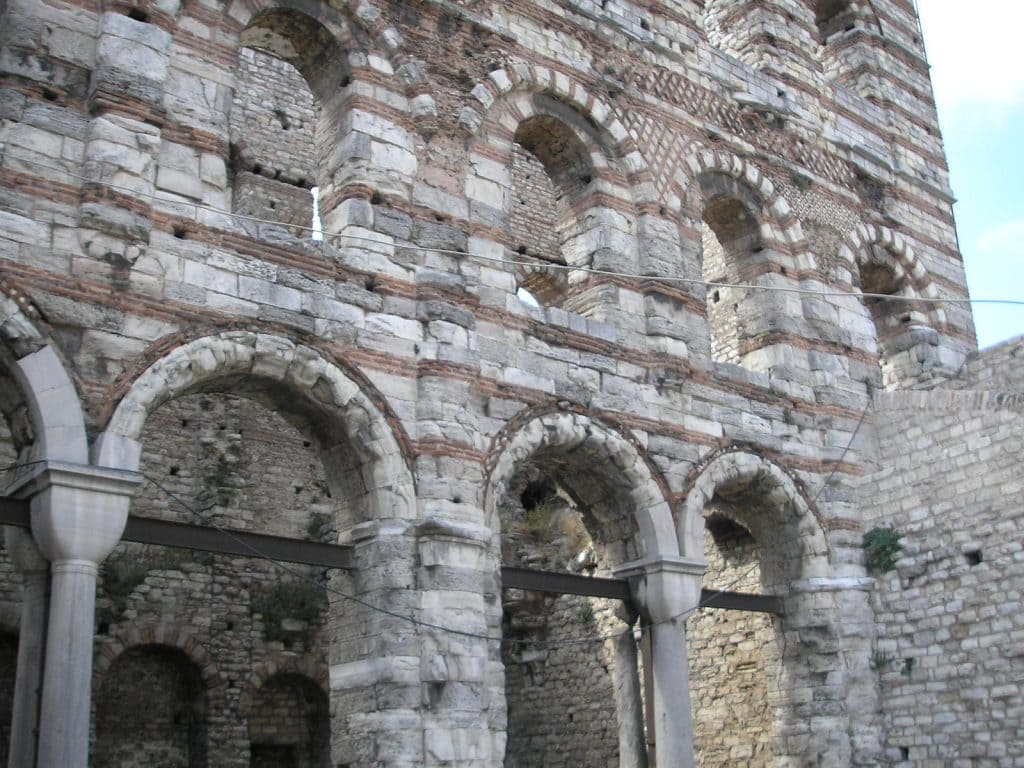
Palace of the Porphyrogenitus or known as Palace of the Sovereign is an ancient Byzentian Palace built in Constantinople, now Istanbul. It is one of the oldest and well-preserved Palaces that can be found in Turkey and that is all the more reason for you to add it to your itinerary.
Although it is mostly ruins of what once was, the palace used to be a three-story structure from what is estimated. Although the roofs and floors have dissipated over time. From the exterior remains are of red bricks and marble which was typical for Byzantine construction.
In the 18th century of the Ottoman Era, the palace was transformed into a mini-zoo, shortly after which it was converted into a ceramics workshop.
By 1850 the palace had been completely abandoned, which is how we see it now. Currently, there are restoration and preservation projects for the palace that are underway. It is the last Imperial palace of the Byzantine era and I highly recommend you to visit.
The fee to enter the palace is 20TL, which is 3 Euros. You can visit the palace all through the week between 9 AM to 6 PM.
Tekfur Palace is located in Ayvansaray, Fatih/Istanbul.
4. Ciragan Palace
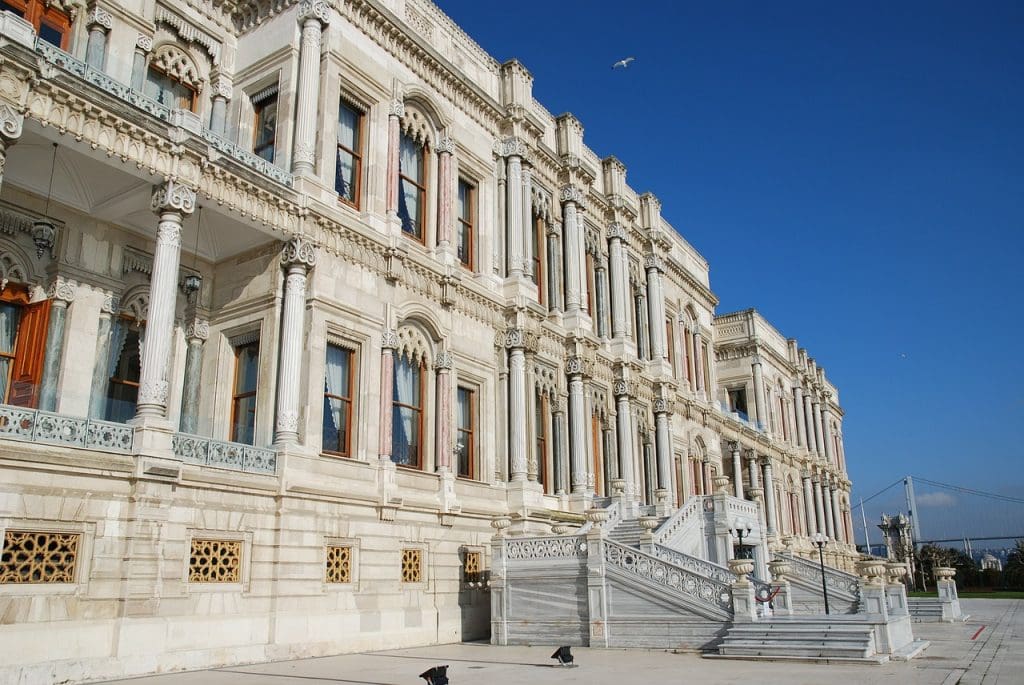
In a time when Sultans began to build their own Palaces, Sultan Abdulaziz commissioned the Armenian architect Nigogayos Balyan for the construction of Ciragan Palace. The process of construction and decoration is placed between 1863 to 1872, while the palace itself is considered to be the last palace to be built in Istanbul for the Ottoman royals.
Sultan Abdulaziz was only able to send a small amount of time in his stunning palace as he was found dead just 4 years after the Palace was completed.
In the early 1900s, the Palace was destroyed by an enormous fire that engulfed the entire structure into flames only leaving the outer walls. The land was then used as a football stadium for the Besiktas J.K. In 1989, the fate of the palace changed when a Japanese company bought it in hopes of restoring it.
Ciragan Palace has been renovated and restored in its authentic Baroque style and functions as a 5 Star hotel. The Sultan’s Suite of the hotel is regarded as one of the 15 most expensive hotel suites in the world with an overnight cost of around $35,000.
You can see the palace turned hotel in Ciragan Cd, Besiktas/Istanbul.
3. Yildiz Palace
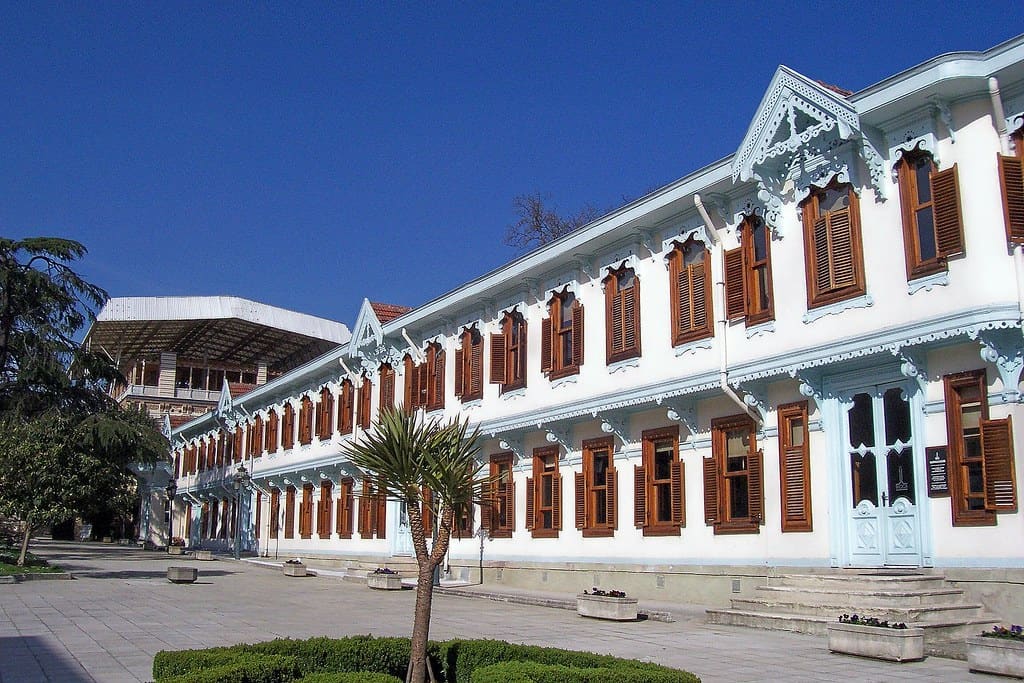
Yildiz Palace was constructed by Sultan Abdulhamid II in the 1880s. There had previously been a royal estate in the same area in the 17th century. The location of the current palace served as vacation homes for quite a few Ottoman Sultans over the era.
Later, in the 19th century, in fear of a coastal attack on the Dolmabahce Palace, Sultan Abdulhamid II decided to relocate to Yildiz Palace. He ordered the expansion of the palace as well as commissioned the Italian architect Raimondo D’Aronco for the construction of new buildings within the complex.
Within the walls of the complex, there are state apartments, three pavilions, a theater, and an opera house, a museum, as well as the imperial porcelain factory. There is also a bridge that connects the Yildiz Palace to Ciragan Palace. The garden surrounding the palace is used for private occasions from time to time.
After the fall of the Empire, the palace was briefly used as a casino but later converted into a guest house for diplomatic guests. The OIC (Organisation of Islamic Countries) Istanbul Headquarters is also located within the complex.
It is unfortunate, however, that the palace has been closed for visitors and tourists as it is currently being used by the Turkish President.
The Palace is located in Yildiz Mah, Besiktas/Istanbul.
2. Dolmabahce Palace

Dolmabahce Palace was ordered to be constructed by Sultan Abdulmecid I as a move away from the medieval Topkapi Palace to a more luxurious and contemporary residence to better fit the new age of the Ottomans. The construction took place between 1843-1856 and was commissioned to the architect Garabat Balyan who saw through the construction and the design.
The construction of the new palace was a rather costly one. It was estimated to have cost $1.5 billion in today’s time. The palace covers around 11 acres of land that have 285 rooms, 68 toilets, 46 halls, and 6 hamams enclosed. Compared to its predecessors in terms of architecture, Dolmabahce is a fusion of Baroque, Rococo, and the classical Ottoman style.
Dolmabahce Palace is decorated heavily in generous quantities of gold, crystals, and expensive marbles. The crystal chandelier that you can see hanging in the ceremonial halls is considered to be the biggest in the world. It is also reported that an estimate of 14 tonnes of gold had been used to embellish the ceilings.
Though it would only go on to housing the final 6 Ottoman Sultans it held onto its importance in the republican period as well. Ataturk resided in one of the rooms in the palace during his trips to Istanbul. He would also use the palace to host diplomats and foreign guests. Ataturk also spent his final days in the Palace as well. The room in which he passed away is visited by many who continue to pay their respects.
You can visit the palace between 9 Am to PM any day besides Monday. You can get a guided tour between 15 Euros to 20 Euros.
The Palace is located in Dolmabahce Cd, Besiktas/Istanbul.
1. Topkapi Palace
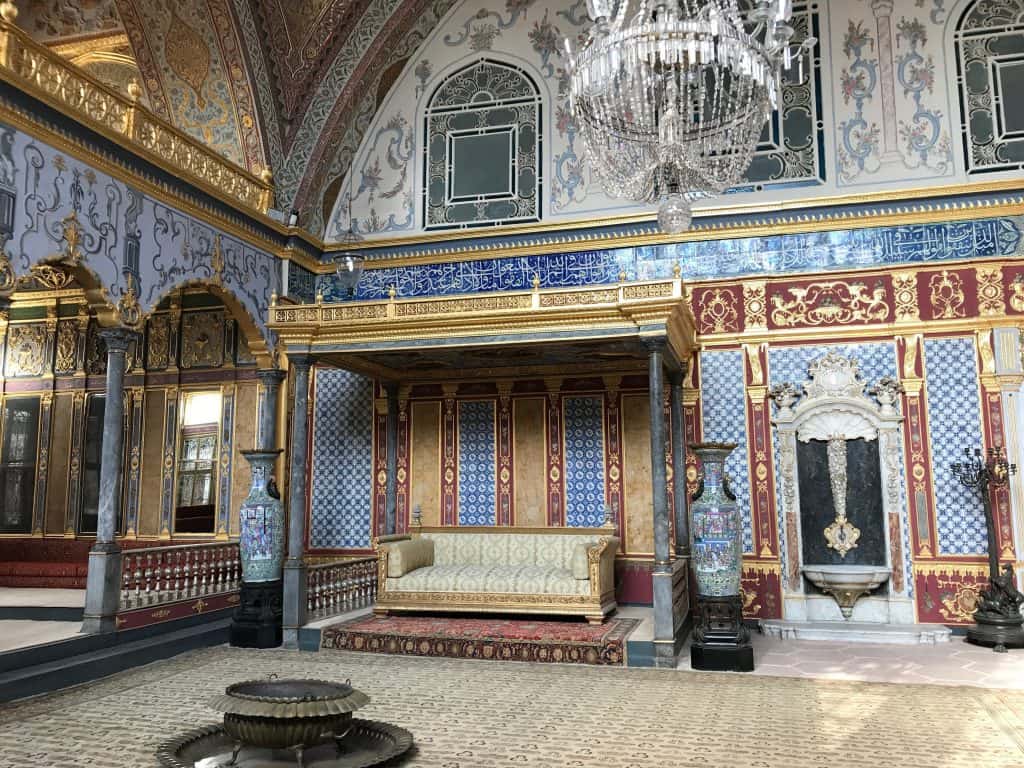
Topkapi Palace was ordered to be constructed a few years after the conquest of Constantinople by Sultan Mehmed II in the 15th Century. When the Ottomans came to Istanbul, they had to establish residences and administrative headquarters, as the Great Palace of Constantinople was badly damaged.
Sultan Mehmed II foresaw the entire process himself as he was certain that the new palace would be a symbol of his reign for centuries to come. The construction and layout are some of the most unique I have seen. To maintain the privacy of the royal family, secret passages and shuttered windows had been used.
Over the centuries, however, the palace had to be renovated and reconstructed after it was destroyed in an earthquake and fire. As well as, later Sultans who ascended to the throne also made changes befitting their style and requirements. Not only that, but Sultan Suleyman ordered the expansion of the palace between the 1520s-1560s as a reflection of the empire gaining strength and its growth.
Topkapi Palace is now a fully functional museum you can visit with plenty to see. You can see the treasury halls, the costumes of the sultans, art galleries and displays of the Byzantine period remains. The best time to go there is in the morning around 9 AM when it opens. You can get the English guided tour of the Palace for 15 Euros.
Do note, you can visit Topkapi Palace between 9 AM to 6 PM Monday to Sunday with the exception of Tuesday.
The palace is located in Cankurtaran, Fatih/Istanbul.
Before you visit…
If you buy an Istanbul museum card, it will cost you 35 Euros (220TL) and it will save you a lot of time. There is always a massive swarm of tourists in these places and getting a museum card will save you time that will be spent standing in line. The palaces in this list where you can use the Museum card are Topkapi Palace (excluding the harem) and Yildiz Palace.
Another thing you should note is that the administration of some of these venues prohibits visitors from taking photos inside the Palaces. Even though the palaces are absolute spectacles, it is best to be respectful of the rules.
You can also reserve some of the venues on the list like Ihlamur Palace, Adile Sultan Palace, and Ciragan Palace. You can make reservations for parties, weddings and corporate events as well.
And finally, have a wonderful time. The palaces in Istanbul are a unique juxtaposition of the traditional eastern Ottoman style and the western Baroque and Rococo. The unique amalgamation of aesthetics is a trademark of Turkish classical architecture you just can’t miss.
